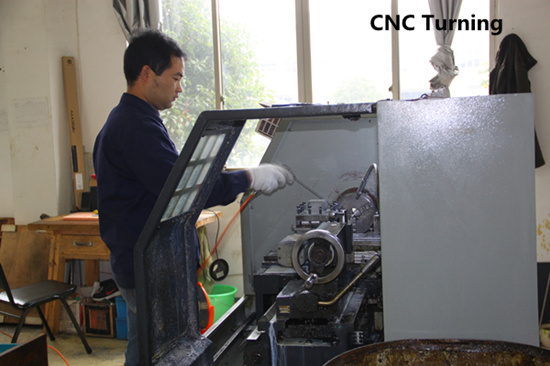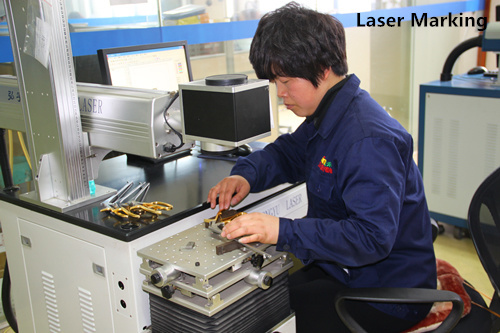| Sign In | Join Free | My himfr.com |
|
| Sign In | Join Free | My himfr.com |
|
| Ask Lasest Price | |
| Supply Ability : | 500 PCS/Month |
| Certification : | CE, FDA, ISO13485 |
| Model | Name | Specifications |
| HF3010 | Measuring bar | Φ5x500mm |
| HF3017 | Myoma drill | Φ10x400mm |
| HF3018 | Myoma drill | Φ5x400mm |
| HF2009 | Knot pusher | Φ5x330mm |
| HF3011 | Palpation probe | Φ5x450mm |
| HF3009 | Uterine maipulator | / |
| HF3007 | Intrauterine forceps | / |
| HF3009.1 | Simple uterine manipulator | 250mm |
| Package detail: | Poly bag and special shockproof paper box. |
| Delivery detail: | By air |






FAQ
The changes in surgical methods for uterine fibroids are mainly reflected in the gradual shift from traditional laparotomy to minimally invasive surgery. The following is a detailed description of the changes:
Traditional laparotomy: This is the earliest surgical method for uterine fibroids. The surgery is performed through an abdominal incision, which is more traumatic and takes a long time to recover.
Laparoscopic surgery: With the development of medical technology, laparoscopic surgery has become an important minimally invasive surgical method. It is performed by making several small incisions in the abdomen and using a laparoscope and surgical instruments. It has the advantages of less trauma and faster recovery.
Hysteroscopic surgery: Hysteroscopic surgery is suitable for submucosal fibroids. The hysteroscope is inserted into the for operation. There is no need for laparotomy, which is less traumatic and allows for faster recovery after surgery.
surgery: surgery is performed through the , without laparotomy, with minimal trauma, and a low incidence of postoperative pelvic adhesions. It is suitable for fibroids on the posterior wall of the uterus.
Application of minimally invasive technology: In recent years, minimally invasive technology has been widely used in the treatment of uterine fibroids, including radiofrequency ablation, high-intensity focused ultrasound (HIFU), etc. These technologies are non-invasive or less invasive, and can effectively preserve the uterus and reproductive function.
Other minimally invasive methods: In addition to the above methods, there are new minimally invasive treatment methods such as uterine artery embolization (UAE) and microwave ablation technology, which also have the advantages of less trauma and faster recovery.
The surgical methods for uterine fibroids have gradually developed from traditional laparotomy to a variety of minimally invasive surgical methods, which have greatly improved the patient's postoperative recovery and have also made significant progress in preserving the uterus and reproductive function.
There is a significant difference in the postoperative recovery
time between minimally invasive surgery and traditional laparotomy
for uterine fibroids. The recovery time of minimally invasive
surgery is relatively short.
Minimally invasive surgery: Minimally invasive surgery is less invasive and recovers faster. Generally, patients can resume daily life and light work within 2-3 weeks after surgery. For hysteroscopic surgery for submucosal fibroids, recovery can be achieved within 1 week to 10 days after surgery. In addition, most patients are discharged within 2-4 days after surgery.
Laparotomy: The wound of laparotomy is larger and the recovery time is longer. It usually takes 1-2 months to recover. If the uterine fibroids are large and laparotomy is chosen, the recovery time may take about three months.
In minimally invasive uterine fibroid surgery, radiofrequency ablation (RF) and high-intensity focused ultrasound (HIFU) are two common treatment methods. According to existing data, there are some differences in the efficacy of the two.
Radiofrequency ablation:
Radiofrequency ablation is a non-invasive technology that ablates uterine fibroids through thermal effects. Three months after treatment, ultrasound diagnosis shows that the maximum diameter has decreased by more than 80% or the fibroids have completely disappeared, and clinical symptoms have returned to normal, which is considered a cure.
This method is usually effective, can significantly reduce the size of fibroids, and has a faster recovery after surgery.
High-intensity focused ultrasound (HIFU):
HIFU is a non-invasive treatment technology that uses sound wave
energy to induce thermal and non-thermal effects in tissues to
ablate fibroids. The ablation rate was 84.89%, and the follow-up
results for half a year showed that the total effective rate of the
patients reached a high level.
The efficacy of HIFU is affected by many factors, including fibroid
volume, average meridian of fibroids, T2WI signal intensity and
uniformity, T1WI enhancement degree and uterine position.
Imaging has important application value in preoperative evaluation
of fibroid characteristics, intraoperative monitoring,
postoperative efficacy and surrounding tissue damage evaluation.
Radiofrequency ablation and high-intensity focused ultrasound
(HIFU) each have their own advantages. Radiofrequency ablation
usually has significant effects and a faster postoperative
recovery; while HIFU is a non-invasive technology that is suitable
for various types of fibroids, and imaging plays an important role
in the treatment process.
The effect and safety evaluation of uterine artery embolization
(UAE) in the treatment of uterine fibroids is supported by multiple
studies.
Effectiveness:
A meta-analysis showed that UAE has a significant effect in treating symptomatic uterine fibroids. The study divided the patients into two groups, the experimental group was treated with UAE, and the control group was treated with uterine myomectomy. The results showed that UAE has advantages in relieving symptoms.
Another study analyzed the long-term efficacy of UAE in treating
uterine fibroids and found that the average volume reduction rate
of fibroids reached 60.4% one year after UAE, reached the highest
(70.5%) in five years, decreased after 10 years (61.1%), and showed
an upward trend after 15 years.
Other studies have shown that UAE treatment of uterine fibroids can
significantly improve patients' anemia, menstrual disorders, and
frequent urination, and is a safe and reliable treatment option.
Safety:
The safety of UAE in treating uterine fibroids has also been widely recognized. Studies have pointed out that UAE has the characteristics of less trauma, faster postoperative recovery, and fewer complications, and is particularly suitable for patients who want to keep their uterus.
Another study explored the effects of UAE on patients' uterine
blood supply and ovarian function. The results showed that the
patients' uterine blood supply and ovarian function were not
significantly affected before and after treatment, and the quality
of life indicators were also improved.
Other studies have pointed out that UAE treatment of uterine
fibroids has little effect on menstruation and fertility, and is a
safe and effective treatment method.
The latest developments and future trends of microwave ablation
technology in the treatment of uterine fibroids are mainly
reflected in the following aspects:
Significant clinical application effect: Microwave ablation technology inserts the ablation needle into the uterine fibroid lesion under ultrasound guidance, and uses the heat generated by the high-frequency microwave electromagnetic field to necrotize the lesion tissue. Studies have shown that this method can significantly reduce the volume of adenomyoma or uterine fibroids, improve clinical symptoms, and significantly reduce related indicators. The effect is reliable, with few complications and low recurrence rate.
Technical improvement and optimization: In the future, microwave ablation technology will develop in a more precise and intelligent direction. Combined with real-time monitoring of image-guided technology (such as ultrasound, CT, MRI), the precise positioning and effect evaluation of treatment can be improved. In addition, manufacturers are committed to improving the design and performance of microwave ablation needles, and improving the accuracy and safety of treatment by optimizing needle design, microwave emission system and control algorithm.
Broad market prospects: According to market analysis reports, the microwave ablation industry will continue to expand in the next few years, and the potential demand space is still large. It is expected that by 2031, the microwave ablation industry will continue to maintain a growth trend, and the direction of technical development will continue to optimize.
Safety and effectiveness: Percutaneous microwave ablation for the treatment of uterine fibroids is considered safe, and there have been no clinical reports showing that it has serious adverse reactions. This method can effectively necrotize the fibroids without damaging the surrounding tissues.
For patients with uterine fibroids, which minimally invasive
surgical method is most suitable for their personal situation and
needs depends mainly on the location, size and other health
conditions of the fibroids. The following are several common
minimally invasive surgical methods and their applicable
situations:
Hysteroscopic surgery:
Applicable situations: Mainly used to remove submucosal uterine
fibroids, especially those growing in the uterine cavity. This
operation enters the uterine cavity through the and uses a
hysteroscopic resectoscope for operation, which is less traumatic
and faster to recover.
Advantages: Avoids abdominal wall incision, reduces surgical trauma
and postoperative recovery time.
Laparoscopic surgery:
Applicable cases: Applicable to cases where uterine fibroids grow
in the myometrium or close to the serosa. In addition, if the
fibroids are large or multiple, laparoscopic surgery is usually
recommended.
Advantages: Relatively sterile and clean, less bleeding, fast
postoperative recovery, and short hospital stay.
surgery:
Applicable cases: Applicable to cases where the abdomen is not
suitable for surgery, such as obese patients or patients with a
history of abdominal surgery. This surgery goes directly to the
site of uterine lesions through and does not require an abdominal
incision.
Advantages: Less trauma, no abdominal wall scars, and fast
postoperative recovery.
Patients with uterine fibroids should choose the appropriate
surgical method based on the doctor's advice and their specific
situation. For example, if the fibroids are located under the
mucosa and are small, hysteroscopic surgery can be selected; if the
fibroids are large or in a special location, laparoscopic surgery
surgery may be required.
For more photos and details please contact me:
Company Name: Tonglu Wanhe Medical Instruments Co., Ltd.
Sales: Sue

|




